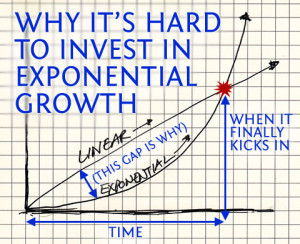
Remote teams work from home, why shouldn’t Jedi?
Having built a remote team of software engineers in New York City a few years ago, there were several lessons learned about how to build a team that sits apart from the rest of the team and how to make them successful. A lot of companies have trepidation about starting a remote team outside of your headquarters, as they should. There are some serious pitfalls, but there are some nice benefits as well, one of which being it gives you a second base to interview and hire candidates into. There are several great articles on the pros and cons, this post focuses on how to do it well.
Here are four tips to make a remote team successful:
- Give them a clear project to own, soup to nuts. The less they need the other office the better in this regard. Best would be to build on top of an existing, refined and documented API. This minimizes communication delays and back and forth between headquarters and the remote team. It also helps the team at HQ get used to a remote team. (Side note: Keeping them in timezones helps communication as well.)
- Inject leadership from HQ. Sending a cultural & technical leader with depth of knowledge of the stack, team, and processes will help to keep them anchored to the team back home. This ties the culture and helps to make sure you hire to the same bar and that remote team members will get along with team members back at home.
- Get your leaders early. Give a lot of leash to hire a great group of early engineers, and sprinkle in a handful of great consultants if you need to get the project flowing quickly. Having some key wins in the first few quarters is a key to the remote team feeling like they’re a part of a bigger picture. It also gives you enough people on the remote team that you can begin to formalize your team’s culture a bit more.
- Hire local leadership. Backfill the cultural leader and start building a second team. Just as a team of one is not a team, an office with only one team is not an office (or at least not much of one.) People need the ability to switch teams, move between projects, and spitball on projects with people not on their immediate team. This also gives you a succession plan, flexibility for your leaders as the remote team continues to grow, and growth opportunities for leaders at your remote office.
With any successful business, you’re going to have to eventually have to learn how to have product, design, operations, development or other functions distributed into other teams. It’s only a matter of time before you’ll have to have two locations for development, so before you get to the point of needing a second center, get it spun up and firing on all cylinders.

 a Quality Assurance organization. Sometimes this has gone well, and others it has been less than effective, which will be the focus of this post. I talked about these in an
a Quality Assurance organization. Sometimes this has gone well, and others it has been less than effective, which will be the focus of this post. I talked about these in an  encouraging them to always learn from the mistake and to not repeat it. Each review period, quarterly when I first encountered this mentality, we would look at the three things you could have done better. Those mistakes or opportunities were a chance to place a mental speedbump on that memory so that going forward you’ll always remember the mistake and the connected ways you can handle it better going forwards.
encouraging them to always learn from the mistake and to not repeat it. Each review period, quarterly when I first encountered this mentality, we would look at the three things you could have done better. Those mistakes or opportunities were a chance to place a mental speedbump on that memory so that going forward you’ll always remember the mistake and the connected ways you can handle it better going forwards. Metrics will rule the world
Metrics will rule the world

